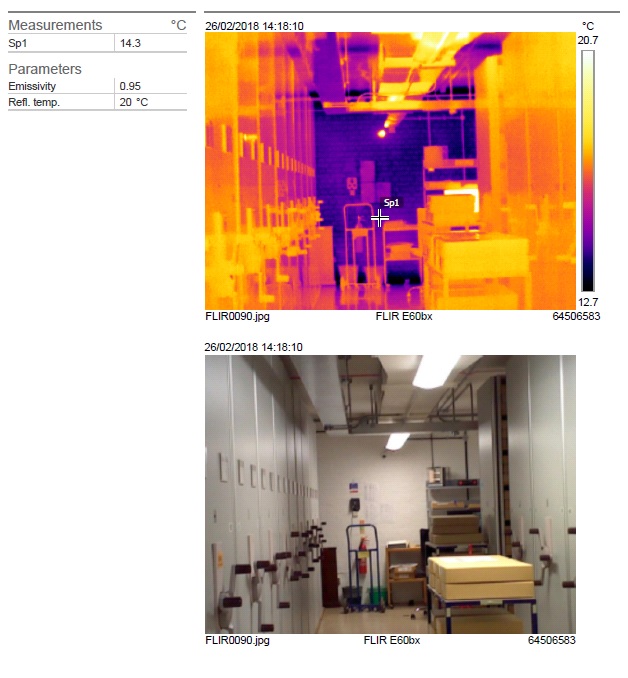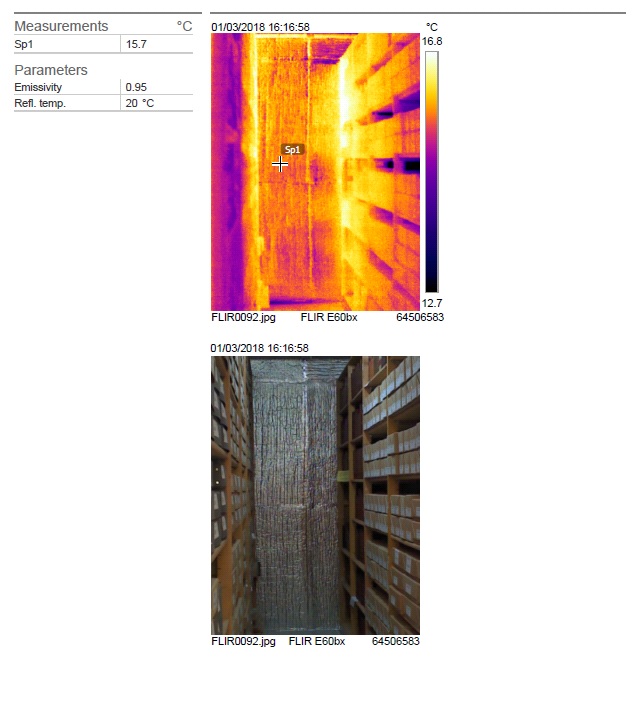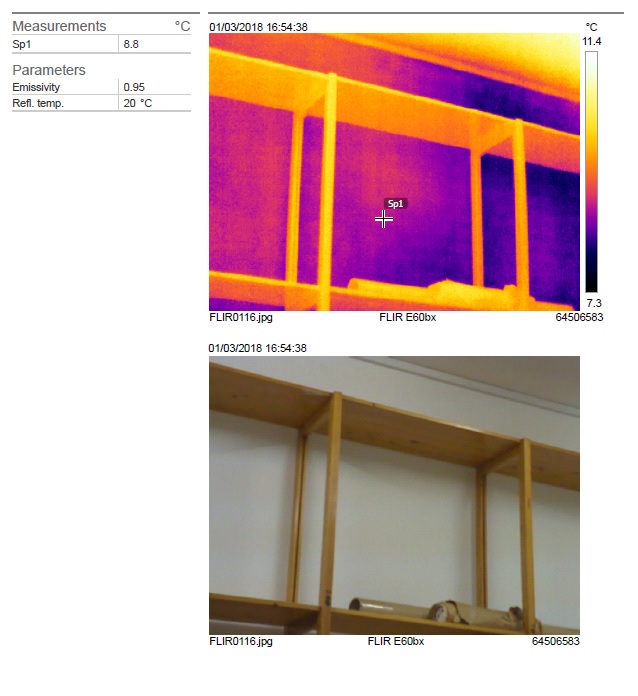In 2015 we discovered that the maintenance department at the College had a thermal imaging monitor (a FLIR E60bx). Out of interest, we borrowed it for a short while to have a look around our storage areas.
In our old strongroom, built in 1973, we were already aware that the south and west walls which were exposed outside walls, could be a problem for material stored on the shelves which were extremely close to those walls. We’d trialled a period of switching off the air conditioning in 2013-14 during which time we’d increased our monitoring using tiny tags and particularly around these walls. In general terms, in a closed space, when the temperature drops the relative humidity rises. So this is why the air next to the cold walls would be likely to have a higher relative humidity than the rest of the room and we did observe this using the tiny tags. Higher relative humidities are a problem for archives as they increase the rate of deterioration in organic materials, can cause planar distortion and increase the likelihood of mould.

Fig. 1: This image shows the cold outside west wall of the strongroom (bluer areas are the coldest).
In the coldest part of the winter in 2018, we again borrowed the monitor to take more systematic readings to record how the temperature varied along the wall and in particular, what difference the insulating foil we’d added to part of the coldest wall was making. We found that where this insulation existed, the temperature of the wall was around 1.5-2.0 degrees centigrade warmer than where there was no insulation. We are likely to extend or improve on this insulation within the next couple of years as we investigate a much more passive system to replace the existing air conditioning system.

Fig. 2:This image shows part of the south wall, between the stacks, where an insulating foil has been applied to keep the wall warmer.
The other interesting thing that we discovered was that the strip lights that we had in 2015 were very warm at the ends and in the middle where the transformer was (between 45-51 degrees centigrade). This was a factor in us deciding to replace these lights with modern, cool, LEDs, many of which are motion sensitive. This improved our energy efficiency and fire safety
In our collection reception area, which we call our Sorting Room, we have long been aware of the potential for high humidity in there because of the fluctuating temperature and exposure of the outside walls.

Fig. 3: Image showing cold outside west wall of the old Sorting Room
Over the years, we have sought to keep the collections in there safe with periodic use of a portable dehumidifier and fans. Again, the thermal monitoring gave us data on the temperature of these walls especially in comparison with the next door room which was then our Reprographics Room. Continuous monitoring since then with tiny tags in both rooms convinced us that swapping the areas around would provide a much more stable, dry and safe reception area. So in January 2020, work began to swap these two areas around and we now have a fantastic new Sorting Room which is absolutely fit for purpose, providing a stable, dry and clean environment.
Sarah Lewery
Senior Conservator
